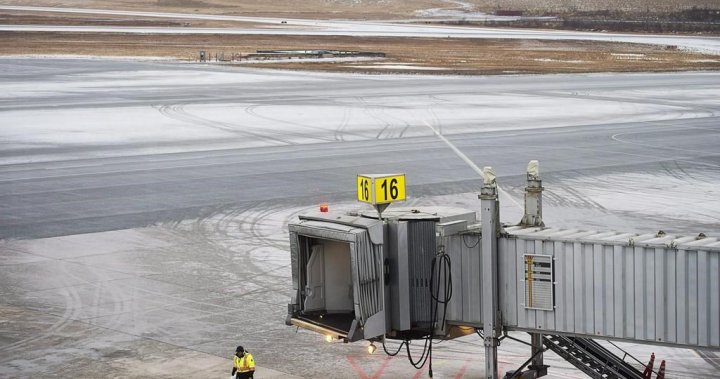On Saturday night, December 28, 2024, at approximately 9:30 p.m., an Air Canada Express flight, operated by Pal Airlines, encountered an incident upon landing at Halifax Stanfield International Airport. The flight, originating from St. John’s, Newfoundland, carried 73 passengers and an unspecified number of crew members. Preliminary reports from Air Canada indicate a suspected landing gear issue prevented the aircraft from taxiing to the terminal. As a result, passengers and crew were deplaned using buses.
Following the incident, flight operations at Halifax Stanfield were temporarily suspended pending an assessment of the airfield and aircraft. One of the airport’s runways was subsequently reopened, allowing for a resumption of regular flight activity. The exact cause of the incident remains under investigation. Conflicting reports emerged regarding potential injuries. While Air Canada initially stated that no injuries occurred, a spokesperson for the Nova Scotia RCMP, who responded to the scene along with paramedics, reported minor injuries among those on board.
This incident underscores the critical importance of robust safety protocols and swift emergency response procedures in aviation. The temporary grounding of flights at a major airport like Halifax Stanfield highlights the potential for significant disruptions to air travel, even in seemingly minor incidents. The prompt response of airport authorities and emergency services, including the RCMP and paramedics, was crucial in ensuring the safety and well-being of passengers and crew. The conflicting reports regarding injuries emphasizes the need for clear communication and thorough assessment in such situations.
Further investigation is necessary to determine the root cause of the landing gear issue. This investigation will likely involve a comprehensive examination of the aircraft’s maintenance records, pilot actions, weather conditions at the time of landing, and other relevant factors. The findings of this investigation will be essential in preventing similar incidents in the future. It is also important to understand the discrepancy between the initial reports from Air Canada and the RCMP regarding injuries. A detailed review of medical assessments and passenger testimonies will be necessary to clarify this matter.
The temporary suspension of flight operations at Halifax Stanfield, though brief, likely resulted in delays and disruptions for other flights scheduled to arrive or depart from the airport. This incident serves as a reminder of the interconnected nature of air travel and the potential cascading effects of even localized incidents. The efficient reopening of one runway mitigated the overall impact on air traffic, but further delays may have occurred as operations returned to normal.
This incident also highlights the vital role played by regional airlines, such as Pal Airlines, in connecting smaller communities to larger airport hubs. The fact that the affected flight originated from St. John’s, Newfoundland, underscores the importance of these regional connections for both passengers and the broader economy. The incident serves as a reminder of the inherent risks associated with air travel and the need for continuous vigilance in maintaining high safety standards. The investigation into this incident will provide valuable lessons for the aviation industry, contributing to ongoing efforts to improve safety and minimize disruptions.

